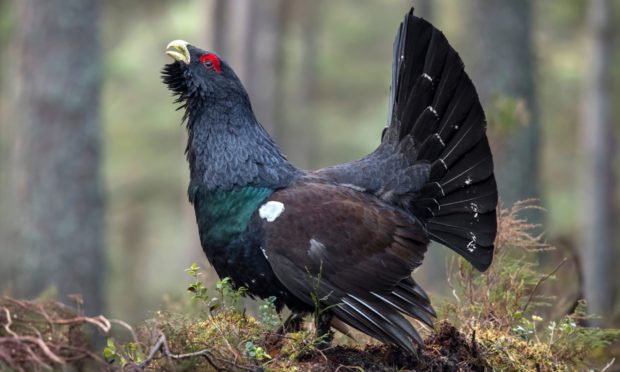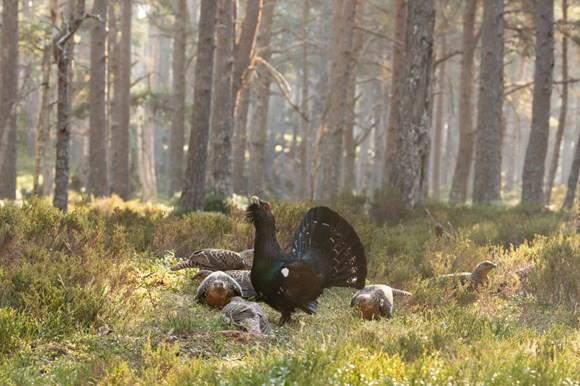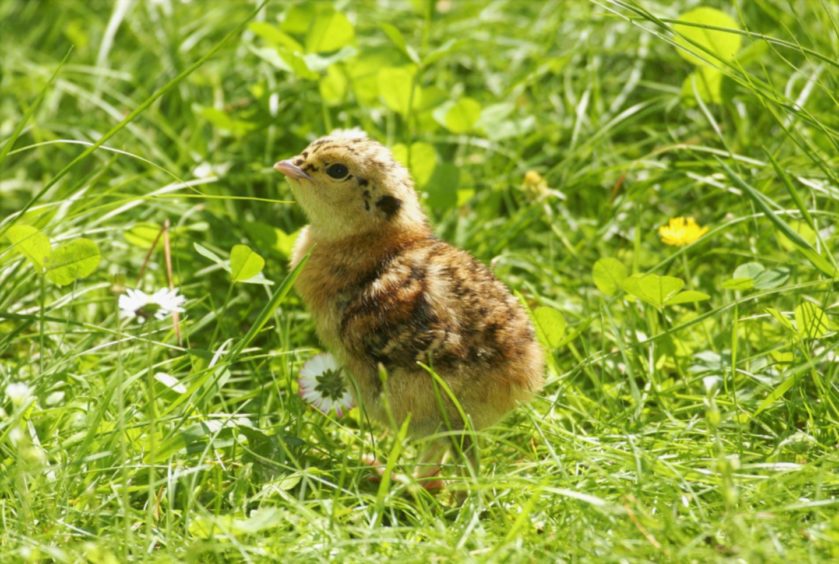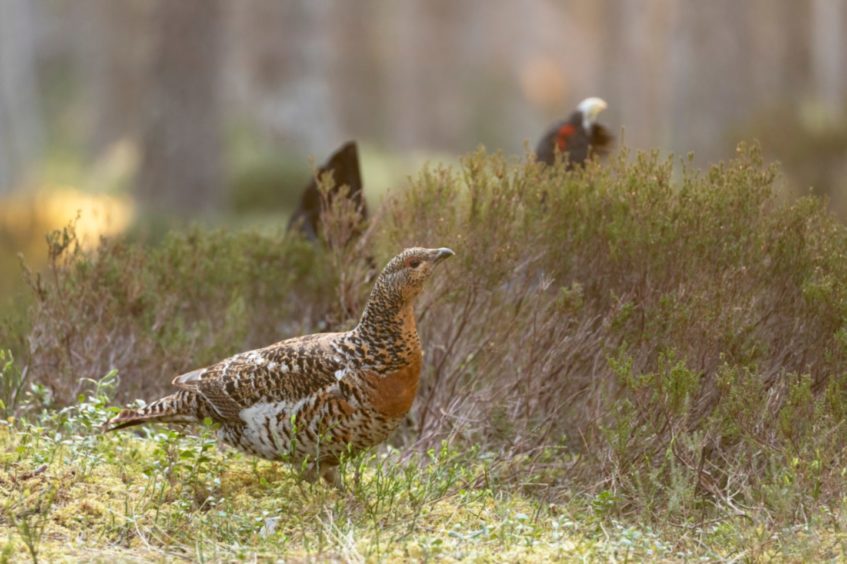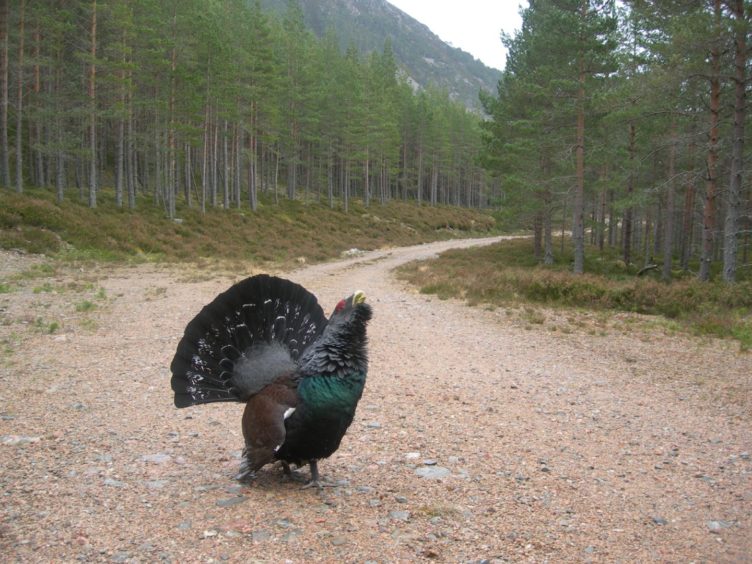Scotland’s capercaillie population has potentially dropped from around 1,100 to an estimated 700 in the past six years, researchers have warned.
Pete Mayhew, director of nature and climate change at the Cairngorms National Park Authority (CNPA), told the authority’s board meeting there have been indications of “quite a severe decline” in the iconic woodland species since the last official Scotland-wide count in 2015/16.
He said all manner of factors have contributed to the drop in bird numbers, including loss of habitat, predators and disturbances by humans.
Mr Mayhew explained that counts at capercaillie leks, the name for the bird’s noisy mating displays, have shown a more than one third reduction in males since the last official count of the birds.
He said the CNPA’s ambitions to increase the bird’s population numbers from 1,100 to 1,200 by next year will “certainly” not be reached.
“It may be even worse”
Mr Mayhew said: “The target is 1,200 caper by 2022, and that came from the last winter transit count, the formal count of capercaillie in Scotland in 2015/16, and that said there was roughly 1,100 caper in Scotland.
“Most, the vast majority of them, around 90% plus of them are in the park.
“Our target is 1,200 because we were hoping that with the work going on we would in a small way expand that population.
“The next winter transit count is this coming winter, so right now we do not know how many capercaillie we have in the park.
“However, we have indicators there has been quite a severe decline in the six years, and that’s mainly from counts of males at lek that have come down in that six year period by 37%.
“If we apply that to the 1,100, we’re talking something like 700 birds.
“It may be even worse than that, females tend not to survive as well as males, so it may be lower than 700.
“We don’t know, but we’re certainly not going to hit that 1,200 target.
“The reasons for the decline is everything from habitat, fences, predators, disturbances, and possibly genetics.”
History of the species in Scotland
The largest member of the grouse family, capercaillie were once common in Scottish woodlands, and remain common throughout Scandinavia and other parts of Europe.
However, the species went extinct in Scotland in 1758, and the modern population has all descended from Swedish stock.
The modern population has continued to struggle, and has plummeted from around 10,000 breeding pairs in the 1960s.
The situation became so bad in the 90s that experts believed the species would become extinct in Scotland by 2010.
However, conservation projects have helped the bird to cling on.
Red alert
Grant Moir, the chief executive of the CNPA, explained capercaillie population numbers are a measure of the quality of Scotland’s pinewoods.
He explained the indications of a severe decline have resulted in the species being moved from the “amber to red” warning category in the CNPA’s plans.
He said: “Capercaillie are a key species that indicate the health and connectedness of our native pine woodlands.
“They are also a good indicator of whether we have the right balance that allows people and nature to thrive together.
“Expert opinion in the 1990s was that the population trajectory for caper in Scotland would lead to extinction of the bird by around 2010.
“That did not happen and this shows that the work of various caper projects over those two decades had a real impact. However, declines in the last six years indicates that this bird remains at risk.
“While significant headway is being made in many areas of the Park Authority’s work and that of the Cairngorms Nature Partnership, conservation efforts for capercaillie are yet to come to fruition.
“However, I have met this week with our key partners to look at next steps and how the work on capercaillie ties in with wider biodiversity strategy work in Scotland.
“We will work together to develop a collective approach on a number of key issues relating to capercaillie and dovetail this with the ongoing work of the Cairngorms Capercaillie Project, which started its delivery phase in July 2020 to deliver a range of activities and actions.
“Never the less, the seriousness of the situation has resulted in capercaillie being moved from ‘amber’ to ‘red’ in the Cairngorms Nature Action Plan.”
“We need to consider further, targeted action”
Mr Mayhew said the Cairngorms Capercaillie Project is “building good momentum” with its “innovative genetics and social science research”, to projects like land management and habitat improvements.
Other work is also taking place with communities and people that spend time near capercaillie and their habitats, such as mountain bikers.
But he said further action should be taken into consideration.
He added: “It is, however, far too early for these efforts to have a demonstrable effect on the population as a whole.
“It’s also important to stress that the project was never designed to cover all of the issues affecting capercaillie breeding success and survival.
“We need to consider further, targeted action in collaboration with our many project partners.”
